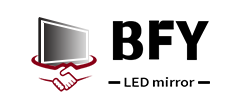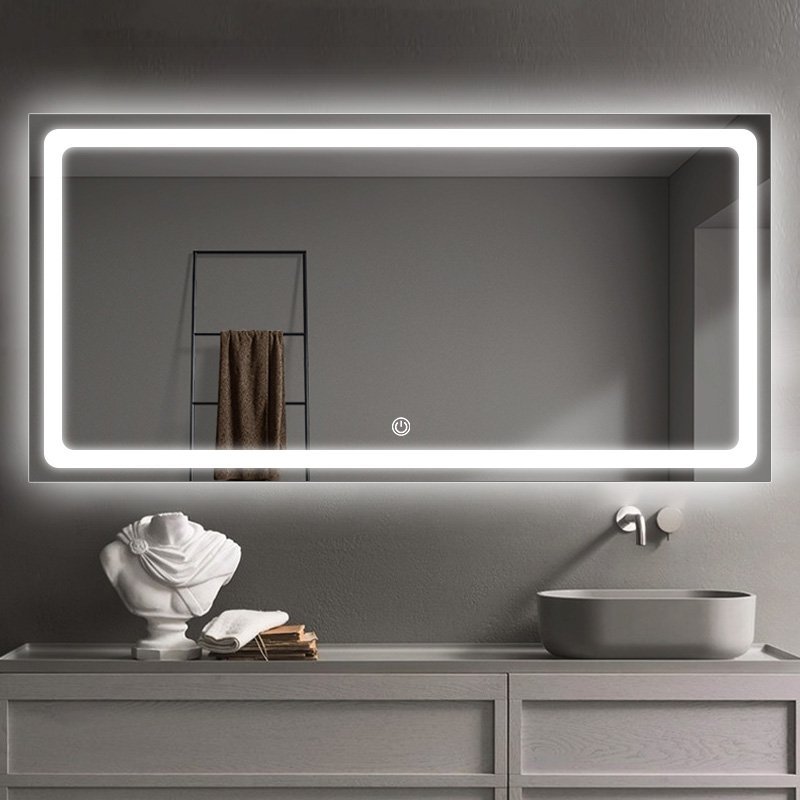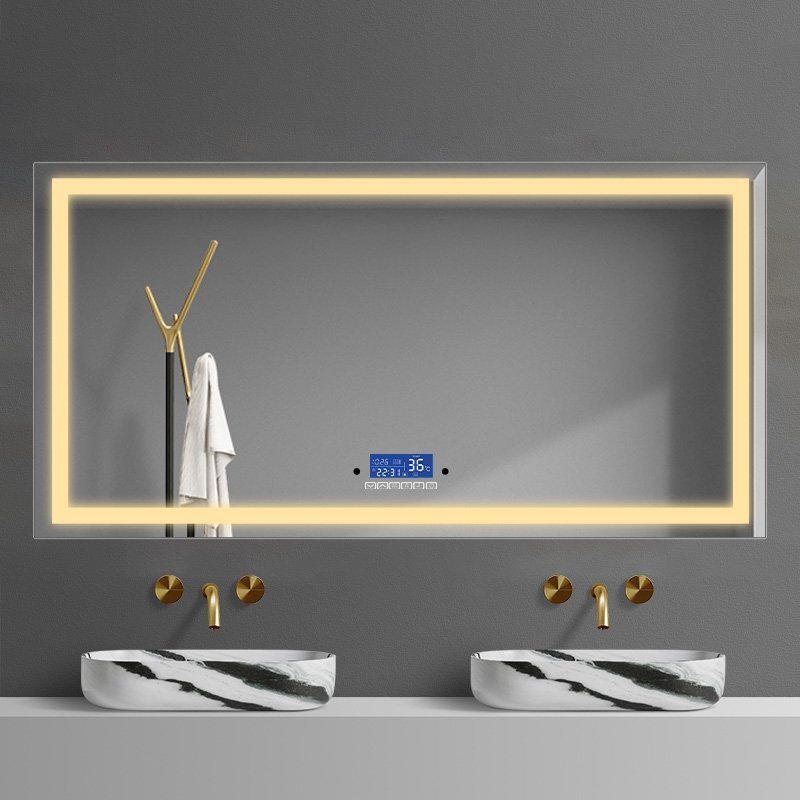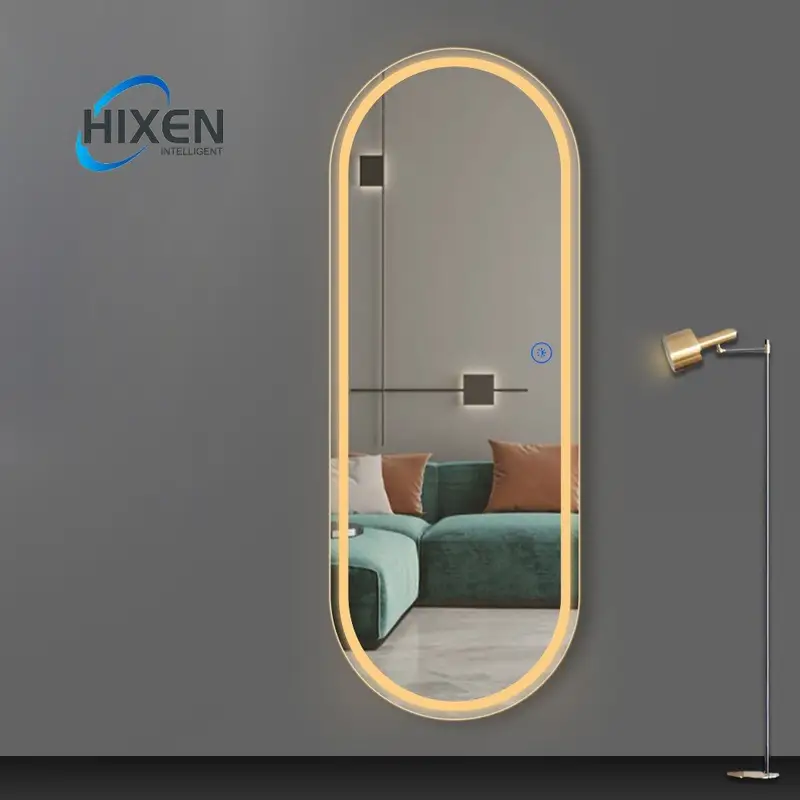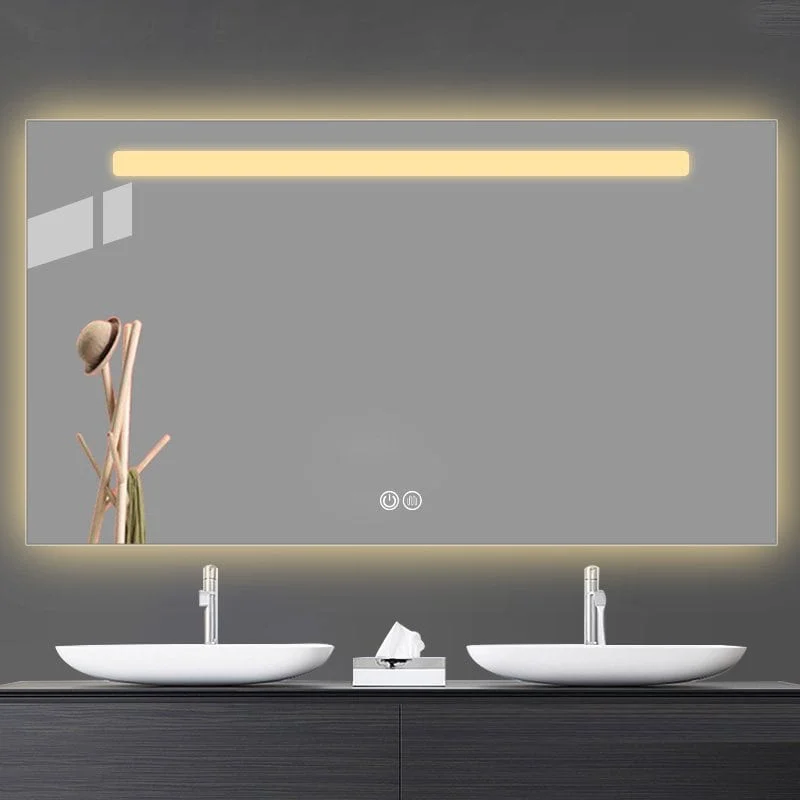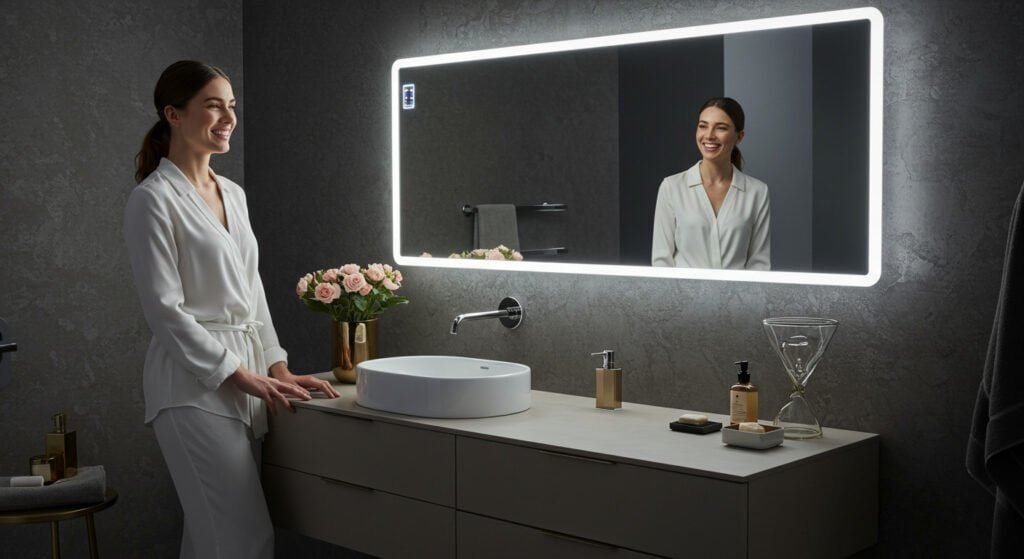|
Obtendo o seu Trinity Audio jogador pronto ...
|
Improper installation methods could lead to shattered mirrors, paredes danificadas, or even personal injury. How to hang a mirror without hooks on the back? Fortunately, several professional installation techniques exist that can securely mount any mirror, whether it’s a decorative espelho de parede com luzes or a simple Espelho do banheiro.
To hang a mirror without hooks on the back, you can use specialized mirror adhesive strips, install French cleats, employ mirror clips, create wire hanging systems, or utilize J-bar brackets. Each method offers different weight capacity and aesthetic considerations depending on whether you’re hanging a lightweight lighted makeup mirror or a substantial bathroom vanity mirror.
Let’s explore these solutions in detail so you can choose the perfect hanging method for your specific mirror type.
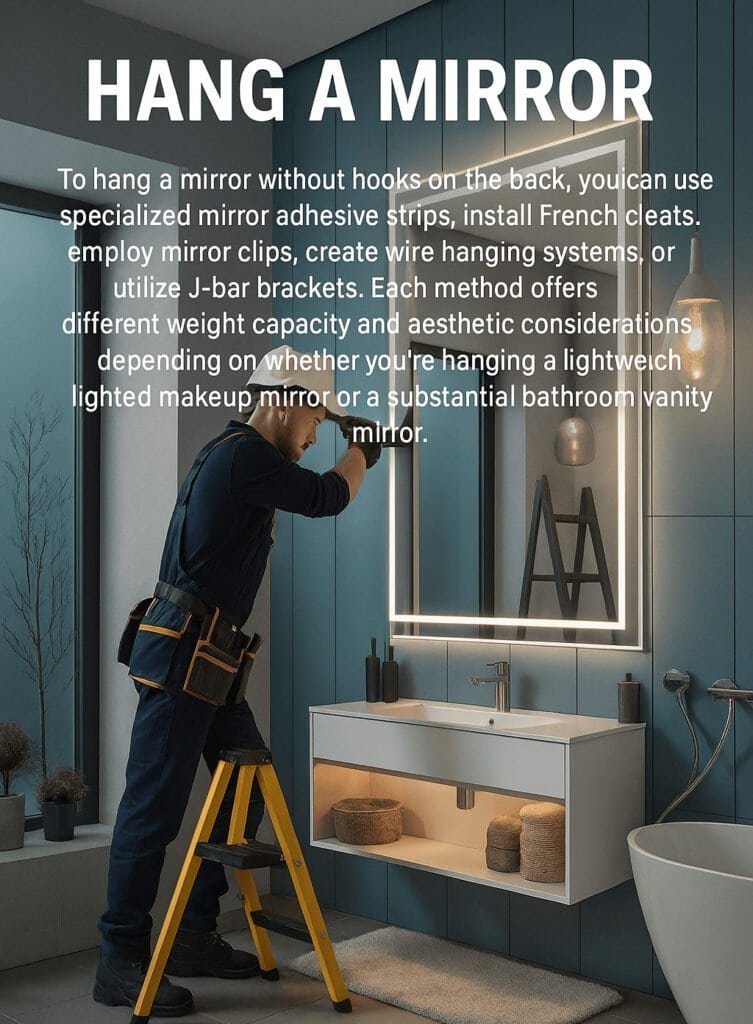
What Are Mirror Adhesive Strips and How Do They Work?
These adhesive strips are designed to hold mirrors securely and are easy to use. They are a great option for renters or those who don’t want to put holes in their walls.
These specialized strips use industrial-strength adhesive on both sides – one adheres to the mirror while the other bonds to the wall surface. Most quality mirror strips can support up to 15-20 pounds when properly installed and are ideal for small bathroom mirrors and decorative pieces.
Primeiro, prepare. Clean both the wall and the back of the mirror thoroughly with isopropyl alcohol. Let it dry completely. Second, measure and mark your location on the wall. Third, apply the strips evenly across the back of the mirror, focusing on the corners and edges. Press firmly and hold for 30 para 60 segundos. Many manufacturers recommend waiting 24 hours before the adhesive reaches full strength. This method works particularly well for vaidade do espelho com luz led installations where you want to maintain a clean, floating appearance without visible hardware.
Can I Use Command Strips to Hang a Mirror?
Command strips are a popular choice for hanging mirrors without leaving holes in the wall, especially in rental properties or for temporary installations.
Command strips are designed specifically for damage-free hanging and come in various weight capacities. For smaller Espelhos de vaidade iluminados, their medium-sized strips can typically support 3-4 pounds per set, while larger Command picture hanging strips can hold up to 16 pounds when used in sufficient quantity.
For successful installation with Command strips, always start with clean, dry surfaces. Most modern bathroom mirror installations require multiple sets distributed evenly across the back of the mirror. Apply the strips vertically on the corners and press firmly against both the mirror and wall for at least 30 segundos. Wait at least an hour before hanging the mirror (no entanto 24 hours is best for maximum adhesion).
The primary advantage of Command strips is their removability without wall damage, making them perfect for renters or those who like to periodically change their mirror decoration wall arrangements. No entanto, they are not suitable for heavy bathroom vanity mirrors or mirrors in high-humidity environments like showers where adhesion may fail over time.
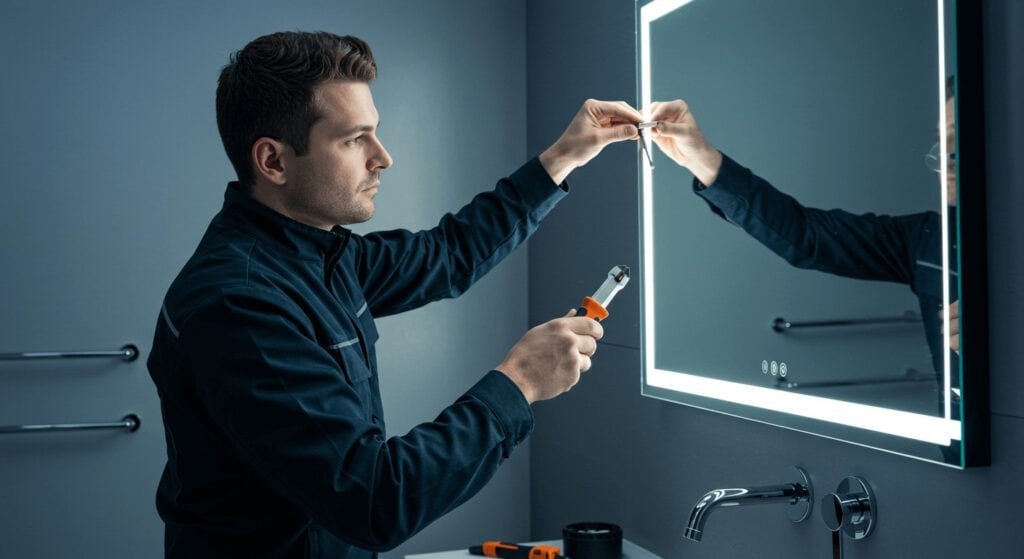
How to Install French Cleats for Heavy Mirrors?
French cleats provide a sturdy hanging solution, especially for heavier mirrors that don’t have built-in hooks or hardware.
This system consists of two interlocking brackets – one attached to the wall and one to the mirror – creating a secure connection that can support substantial weight. French cleats distribute weight evenly across the wall and can safely hold heavy led bathroom mirrors weighing 50+ pounds when properly installed into wall studs.
Installing French cleats requires careful preparation and precise measurement. You’ll need a stud finder, nível, furar, parafusos, and the French cleat hardware itself. Begin by locating and marking wall studs, as these provide the necessary support for heavy mirrors. Mount one bracket to the wall using screws that penetrate into the studs, ensuring it’s perfectly level.
Attach the complementary bracket to the back of your mirror using an appropriate adhesive designed for glass and mirrors. Some commercial versions come with pre-drilled holes that make this process easier. Allow adhesive to cure completely according to manufacturer instructions before hanging. The interlocking design allows the mirror to sit flush against the wall while providing exceptional support and stability. This method works particularly well for large backlit mirrors where other hardware might be visible or detract from the illuminated effect.
How to Hang a Large Mirror Without Hooks?
Large mirrors pose a unique challenge due to their weight and size. You’ll need to take extra care to ensure large mirrors are securely mounted.
When hanging large espelhos iluminados modernos para banheiros, combining multiple mounting methods often provides the best security. For mirrors exceeding 30 libras, consider using a combination of French cleats along the top edge with mirror mounting clips at the bottom to prevent shifting or tilting.
Safety is paramount when working with large mirrors. Make sure you always have at least one assistant to help you manage the weight and prevent slipping. Ideally, before you start hanging a larger mirror, you will have studied your wall to determine where the strongest mounting points are, or even better, where the studs are located. If you have a very heavy mirror (say 50 pounds or more), you may need to mount a wooden mounting board across multiple studs, then attach your mirror mounting bracket to that.
Grande Espelhos retangulares do banheiro may also benefit from additional support in the center areas to prevent potential warping over time. Também, consider the finished look. In many cases, larger mirrors look best when they have a small, consistent gap from the floor (maybe 8 para 12 polegadas) unless it’s specially designed as a floor mirror. Finally, if your mirror is extremely valuable or exceptionally heavy, professional installation might be the best course of action.
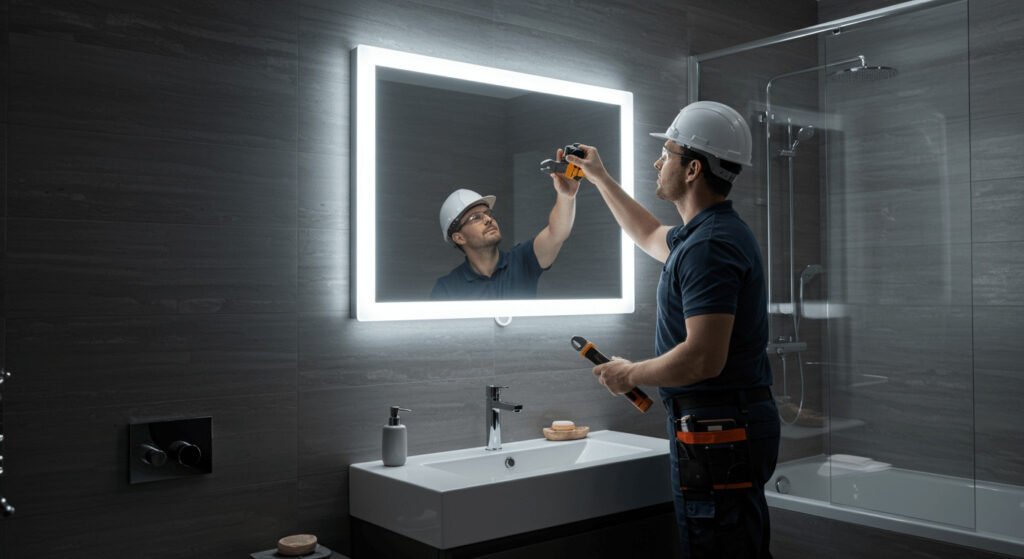
How to Hang a Heavy Mirror on a Brick Wall?
Brick walls can present a challenge when hanging a mirror. No entanto, once you figure out the right process, a brick wall can provide an extremely strong base for hanging your mirror.
Masonry anchors specifically designed for brick installation are essential when hanging heavy bathroom vanity mirrors on brick surfaces. These specialized anchors expand within the brick to create a secure mounting point.
It starts with selecting the right drill bit and anchors to use with your specific type of brick. Most residential brick walls require that you use a hammer drill with a masonry bit. This bit allows you to drill a very clean, precise hole without damaging the surrounding brick. Start by marking where you want the mirror and where you need to drill your holes. Then drill your pilot holes a little bit smaller than the masonry anchors you’re going to use. Insert the anchors according to manufacturer instructions, then attach your mounting hardware – typically heavy-duty mirror brackets or a substantial French cleat system for large led bathroom mirrors.
Make sure you don’t get too close to the edge of the brick because you’ll crack the brick and cause all kinds of problems. If you’re dealing with a particularly heavy mirror, say over 50 libras, you might want to consider a wooden mounting board that gets anchored to the brick wall with multiple masonry anchors. Then you’d attach the mirror to the wooden substrate using whatever conventional mounting method you’re using. This will help distribute the weight of the mirror more evenly across multiple attachment points in the brick. And if you’re dealing with a particularly delicate brick finish, especially on a historic home, consult with a professional installer who specializes in masonry before proceeding.
When Should You Use Mirror Clips for Installation?
Mirror clips provide versatile support for frameless mirrors while allowing easy installation and removal when needed.
Standard mirror mounting clips come in various designs including metal and plastic options, and typically support mirrors up to 1/4 inch thick. Most clip systems can hold mirrors weighing 30-40 pounds when installed properly using wall anchors or by securing into wall studs.
Installing mirror clips involves a lot of measuring and patience. Primeiro, clean the wall surface where the mirror will hang. Then measure and mark where the clips will go. You need a minimum of four clips. Two will go on the bottom to hold the weight of the mirror, and you don’t want the mirror to fall out the bottom. You’ll put two more clips at the top to help prevent the mirror from tipping forward. For larger, heavier mirrors, you can use more side clips to keep the mirror in place. Go ahead and drill your holes on the marks you made. If the holes don’t line up with your studs, install whatever anchors are required for the specific type of wall in your home. Then screw the clips into the anchors.
Gently slide the mirror into position. Make sure you get the bottom clips positioned so the mirror won’t slide out, and then go ahead and position the top clips. The great thing about the clips is they hold the mirror out from the wall slightly. This slight air gap is beneficial in a bathroom application because it helps prevent moisture from building up behind the mirror. This method is particularly popular for bathroom vanity mirrors in humid environments. For a more decorative approach, consider using clips that complement your bathroom fixtures or choose bottom clips with top adhesive corners for a more minimalist look with your espelho de LED.

How to Hang a Frameless Mirror on a Wall?
There are no frames, so there are no brackets that typically hide behind the mirror and get attached to the wall. Instead, the mirror goes directly against the wall.
Frameless glass mirrors require special care to prevent edge damage during installation. For medium to large frameless mirrors, a combination of bottom mirror clips with top adhesive discs often provides the most secure and visually appealing mounting solution.
Begin by determining the exact position for your mirror using a level and pencil marks. For a typical frameless bathroom light mirror, install the bottom clips first, ensuring they’re level and securely anchored to the wall. The clips are doing most of the work here. Clean the back of the mirror where the adhesive will go. Use a high-quality silicone adhesive or mirror mastic specifically designed for mirrors. Don’t use generalpurpose construction adhesive or liquid nails though. That’ll eat the back of the mirror.
Put the adhesive discs on, or put the mirror mastic on the top corners, and in the center of the back of the mirror. Have a buddy help you carefully position the mirror onto the bottom clips. Then you’regoing to press the top side of the mirror against the wall gently. Hold it in place according to the adhesive manufacturer’s instructions. One thing you might consider, depending on your situation, to protect against edge chipping is to put clear edge protectors on a frameless mirror before installing it. If installing a espelho iluminado, ensure your mounting method allows sufficient space for the lighting components and any required electrical connections.
How to Create a Wire Hanging System for Mirrors?
Wire hanging systems provide a flexible and secure way to hang mirrors when other options for mounting are not possible.
This method utilizes specialized mirror adhesive, D-rings, and hanging wire to create a custom hanging solution. When properly installed, a wire system can typically support mirrors weighing up to 25-30 libras, depending on the quality of components used.
Creating a wire hanging system involves a few steps. Primeiro, gather mirror mastic (adhesive designed for attaching mirrors to walls), D-rings or mirror hangers, picture wire, and the appropriate wall hardware. Clean the back of the mirror well with alcohol and let it dry. Then apply very small amounts of mirror adhesive to the D-rings and place them on the upper part of the mirror back (sobre 1/3 down from the top edge), setting them in from the sides about 4 para 6 polegadas. Let the adhesive fully cure as directed by the manufacturer (tipicamente 24 para 48 horas).
Once cured, thread picture wire through the D-rings, keeping it taut but with enough slack to hang properly. Install appropriate wall hardware, ensuring it can support the mirror’s weight. This hanging method works particularly well for mirrors with black frame or decorative mirrors where the frame provides good adhesion surface for the D-rings. The wire system allows for easier adjustment and leveling compared to other mounting methods, which is especially helpful when installing multiple mirrors as part of a room mirror ideas arrangement.

How to Hang a Mirror on Wall Without Nails?
There are several different effective nail-free mounting options if you want to avoid wall damage or don’t have a surface where nails will work.
Adhesive hanging strips, specially designed hooks, and tension mounting systems offer secure installation for light up vanity mirrors and other mirror types without the need for nails or drilling.
Good quality adhesive strips are the most versatile nail-free option. The better brands offer versions that hold up to 16 pounds when you use them according to the directions. Be sure to clean both the wall and mirror surface well with alcohol before sticking.
Another option is J-hooks mounted with adhesive. This option works well on textured walls where flat adhesive strips might not adhere as well. Para espelhos maiores, mount multiple adhesive mounts evenly across the back. If you are in a rental or temporary situation, spring-tension rod systems between the floor and ceiling can serve as a mounting point for lighter mirrors without any wall damage.
If using adhesive methods in bathrooms, select products specifically rated for high-humidity environments, as standard adhesives may fail prematurely in these conditions. These nail-free solutions work particularly well for modern bathroom mirrors in rental properties where wall preservation is essential.
How High to Hang Full Length Mirror?
The key with full-length mirrors is to place them where they will be functional and look good.
The standard height placement for full-length mirrors depends on the average height of the users and the mirror’s dimensions. For typical household use, the mirror should be positioned so its center is approximately at eye level (5’6″ to 5’9″ do chão).
Dan covers how to hang a full-length mirror. Primeiro, measure the full length of the mirror. With a standard 60” full-length mirror, put the bottom edge about 12” to 14” from the floor. This is how high most adults need it to see from head to toe when they’re standing at a comfortable distance. If you have some taller or shorter residents in the home, you may adjust that slightly. Tipicamente, you’ll also want to position the mirror near natural light in a dressing room or bedroom.
If your full-length mirror includes integrated lighting, such as an espelho de LED design, ensure it’s positioned to maximize the lighting effect while still maintaining proper height for full-body viewing. For freestanding or leaning mirrors with black frame, position them at a slight angle (aproximadamente 5 graus) for optimal reflection and stability. Remember that wall-mounted full-length mirrors should always be secured with hardware appropriate for their weight, preferably anchored into wall studs for maximum safety.

How Do You Hang a Backless Mirror?
If you are using a backless mirror for decorative purposes (not meant to be used for dressing), there’s a special way to hang those.
For backless or antique mirrors where the reflective surface is exposed on both sides, mirror clips typically provide the safest installation method as they minimize contact with the fragile mirror material.
When hanging backless mirrors (a mirror with no backing) for decorative purposes, you must be extra careful. Always wear clean cotton gloves when handling a backless mirror. For hanging, you can get small corner or edge clips (made for that purpose) to grip the edge of the mirror. These clips should have some cushioning between the clip and mirror to avoid stress points, and never use adhesives that will damage the exposed reflective coating.
For larger backless mirrors, consider bottom support clips combined with minimal top restraints to secure the mirror while reducing pressure points. If your backless mirror is particularly valuable or antique, professional installation is highly recommended. For decorative arrangements featuring multiple backless mirrors as part of room mirror ideas, plan the installation to minimize handling once the mirrors are in place. The visual effect of backless mirrors can be enhanced when installed near bathroom light mirrors or other light sources that can play off both reflective surfaces.
What Professional Services Are Available for Mirror Installation?
Remember too, they have professionals who handle your install, and they have specific tools to do it right.
Most professional mirror installers provide a complete service including assessment, hardware selection, precise positioning, and secure mounting of everything from simple bathroom mirrors to complex espelhos iluminados modernos para banheiros.
Costs vary but usually range from $100 para $300 based on the size and complexity of the job and where you live. Most companies also offer a warranty on their installation. If you go with a company, make sure they specialize in hanging mirrors and are not just a handyman. A reputable installer will come to your home and look at the wall you want the mirror hung on, assess the stud location, offer you different options and give you a price on the spot.
They typically carry specialized equipment for handling large glass mirrors safely and have access to commercial-grade mounting hardware not readily available to consumers. Professional installation is particularly valuable for expensive led bathroom mirrors, custom-cut mirrors, or installations in challenging locations such as above bathtubs or on difficult surfaces like tile or brick.
Many mirror installation professionals also offer complementary services such as custom mirror cutting, beveling, and frame additions. For businesses installing lighted vanity mirrors for bathroom in commercial spaces, professional installation often includes liability insurance coverage that can provide additional peace of mind.

Conclusão
Hanging a mirror without built-in hooks requires selecting the appropriate method based on your mirror type, wall surface, and weight considerations. Whether you choose adhesive strips, mirror clips, French cleats, or professional installation, prioritizing secure attachment ensures both safety and longevity for your beautiful bathroom vanity mirrors or decorative wall mirrors with lights.
- Para aprender a escolher o espelho do banheiro certo, clique aqui.
- Para aprender a instalar um espelho, escolha aqui.
- Para aprender a escolher o espelho do tamanho certo, clique aqui.
- Para saber como os espelhos são feitos, clique aqui.
- Clique aqui e você aprenderá por que ficamos melhores nos espelhos.
- Clique aqui você aprenderá sobre o topo 10 Fabricantes de espelho de LED para 2024.
- Clique aqui para descobrir por que minha luz de espelho de vaidade não acende?
- Descubra quão alto deve ser o espelho do banheiro?Clique aqui
- Clique aqui se você não sabe como limpar seu espelho
- Para descobrir como consertar o espelho do sensor de toque não funcionando, clique aqui
